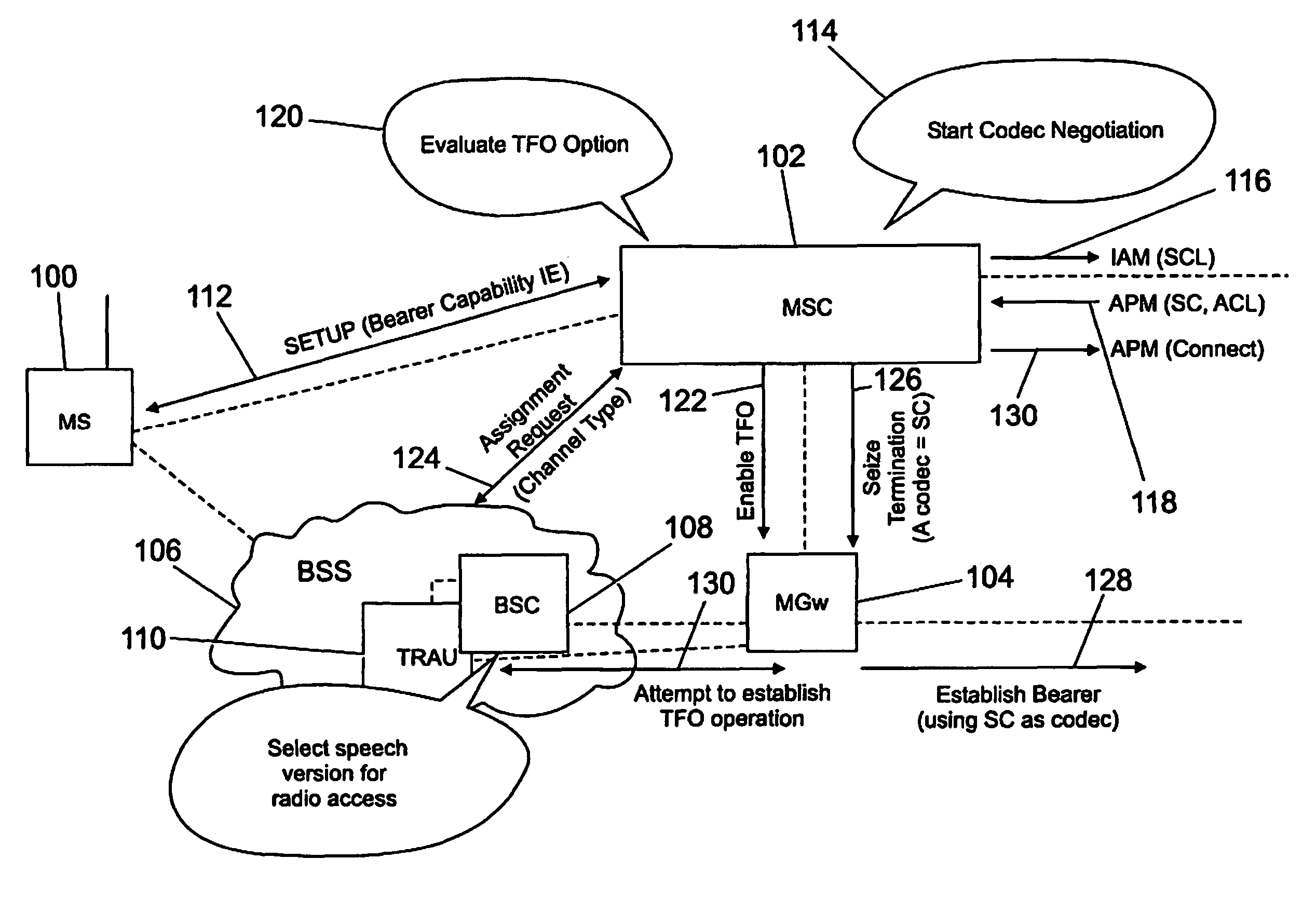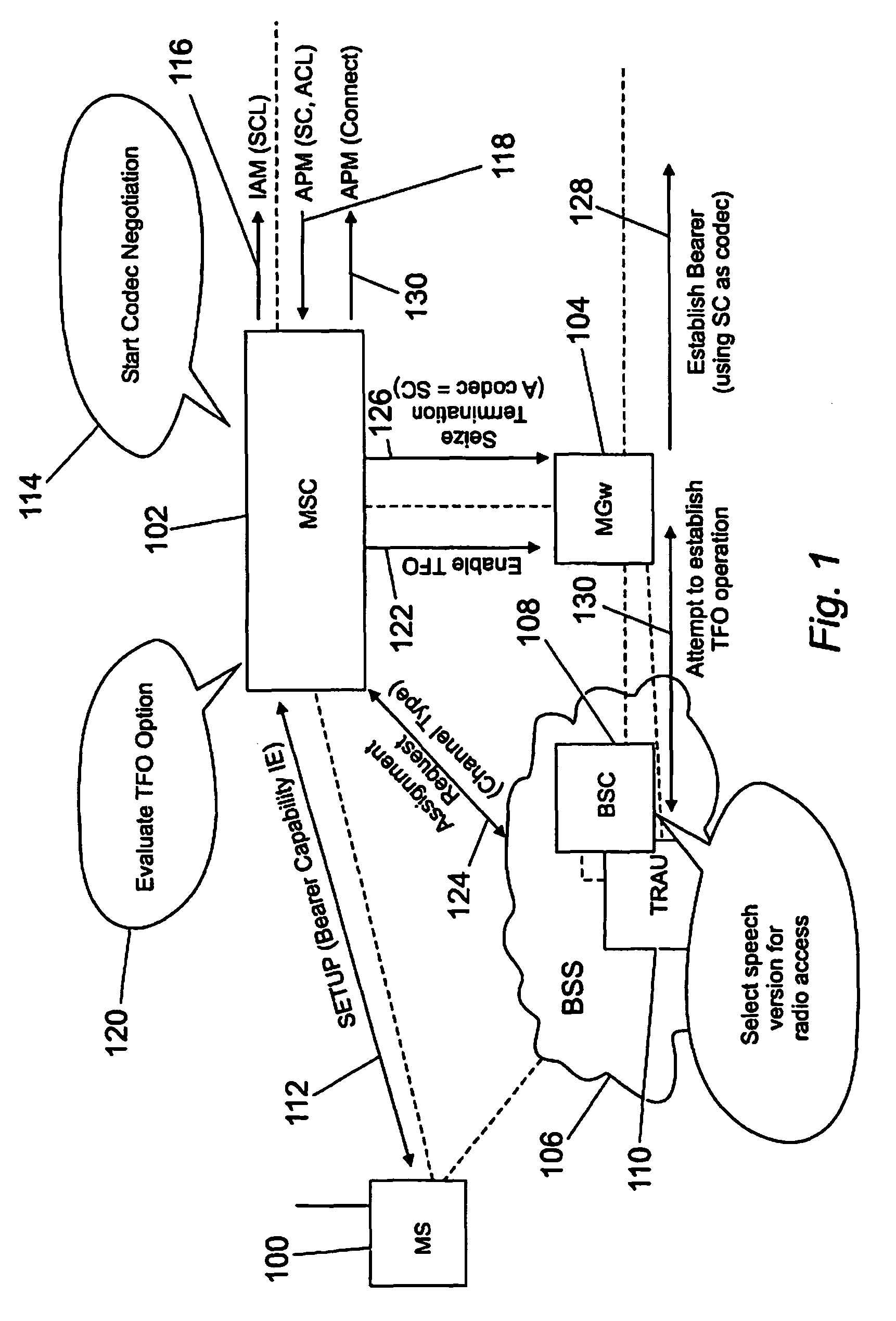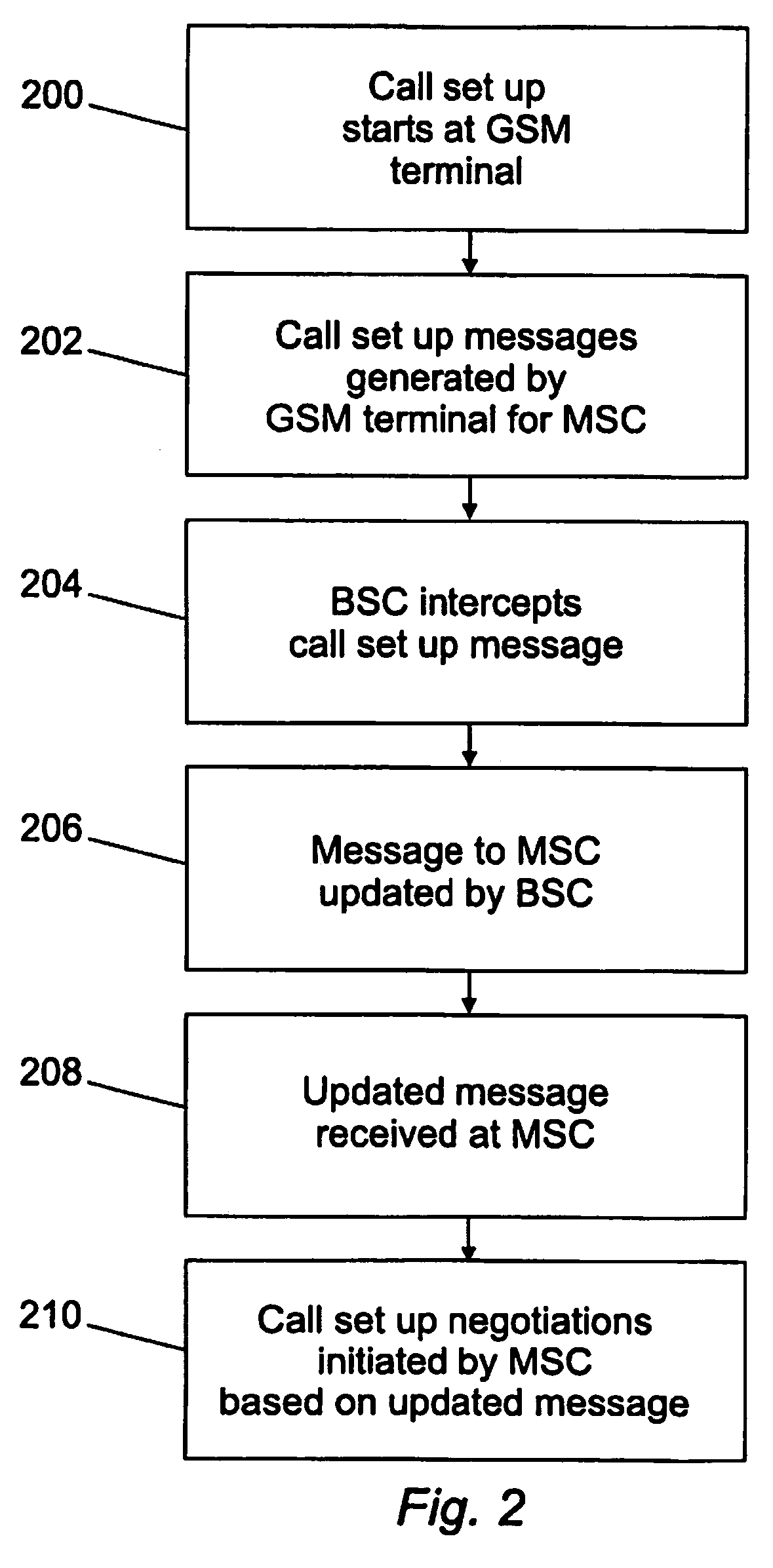Method for codec negotiation and selection
a codec and codec technology, applied in the field of codec negotiation and selection, can solve the problems of reducing the overall speech quality of the call, and unable to achieve tfo, so as to achieve efficient codec negotiation with other network elements, prevent over provisioning, and improve the effect of network operation
- Summary
- Abstract
- Description
- Claims
- Application Information
AI Technical Summary
Benefits of technology
Problems solved by technology
Method used
Image
Examples
Embodiment Construction
[0041]FIG. 1 shows the call setup procedure for a GSM Mobile originating call for a transcoding free operation call. FIG. 1 shows a mobile station 100 in communication with a mobile switching centre (MSC) server module (MSC-S) (not shown per se) in an MSC 102. The MSC is in communication with a media Gateway module 104 and a base station system module (BSS) 106. The BSS includes a base station controller node or module (BSC) 108 and a transcoding unit (TRAU) 110. The call originates from the mobile station (MS) 100 which may also be referred to as the GSM terminal. The GSM terminal communicates with the MSC-S associated therewith through the BSS and BSC. The originating GSM terminal indicates the supported Codec types (oMS-SCL: originating Mobile Station Supported Codec List) in a message to the MSC-S. Within the diagram of FIG. 1, the dotted lines show some of the physical connections between the various modules. It will be appreciated that there may be more. Furthermore, within th...
PUM
 Login to View More
Login to View More Abstract
Description
Claims
Application Information
 Login to View More
Login to View More - R&D
- Intellectual Property
- Life Sciences
- Materials
- Tech Scout
- Unparalleled Data Quality
- Higher Quality Content
- 60% Fewer Hallucinations
Browse by: Latest US Patents, China's latest patents, Technical Efficacy Thesaurus, Application Domain, Technology Topic, Popular Technical Reports.
© 2025 PatSnap. All rights reserved.Legal|Privacy policy|Modern Slavery Act Transparency Statement|Sitemap|About US| Contact US: help@patsnap.com



